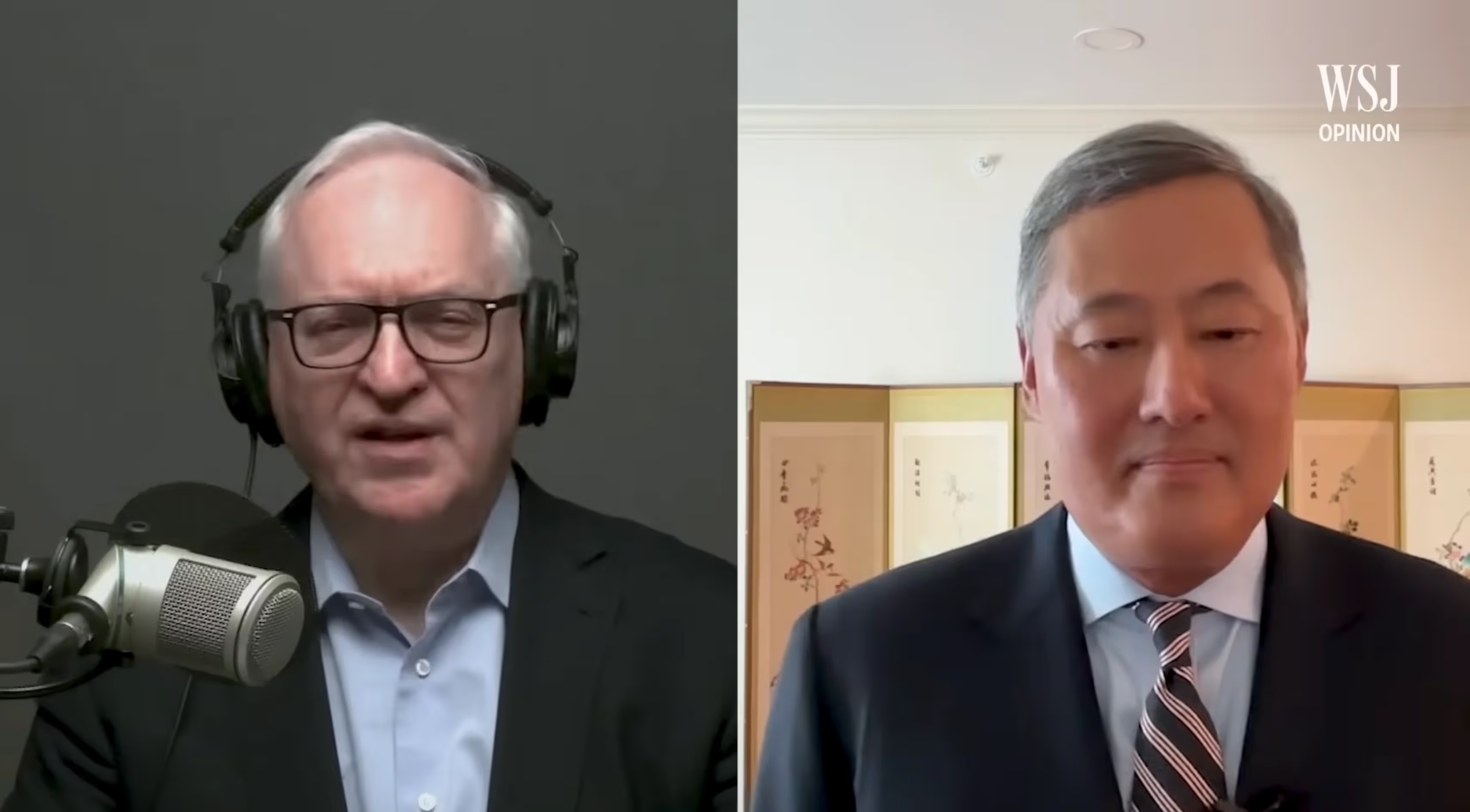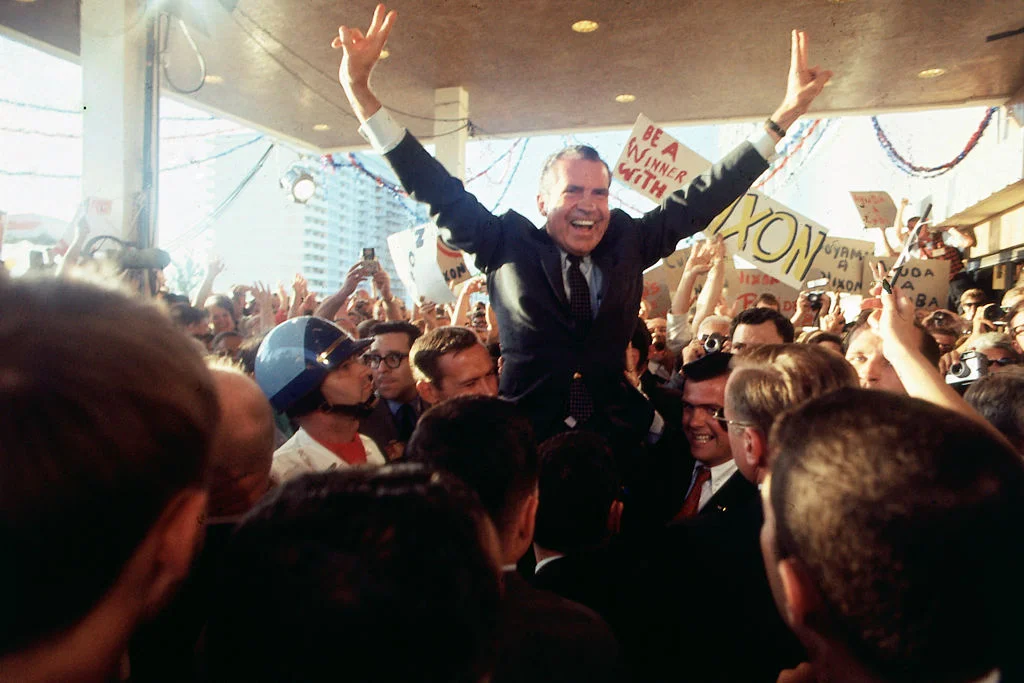
Trump’s Ukraine Fiasco
The President has neither the judgment nor the cards to let Putin have his way in Ukraine.
President Donald J. Trump has long regarded himself as the ultimate master of negotiations, even before the 2016 campaign, when he crowned himself such in his best-seller The Art of the Deal. Sadly, it should now be evident that Trump has lost his touch; today, he has no idea how to act when high-stakes international matters are on the table. The plan was reportedly drafted by Trump and Putin, with no involvement from Ukraine, which helps explain why Meduza reports that the supposed deal calls for “Outright capitulation” from Ukraine, which “risks becoming another Molotov-Ribbentrop Pact.” The New York Sun headline stated “Trump’s Peace Plan for Ukraine Leaves Putin Gloating, Zelensky Despondent,” given Trump’s explicit demand that Ukraine accept these terms of abject surrender or lose American military and logistical support. It was exactly backwards. He should have leaned on Putin to moderate his demands.
But now that Trump has made the wrong choice, one can hope that an errant United States has already shot its wad by having reduced its support so far that by now, Ukrainian ingenuity has stepped up. Ukraine replaced American long-range Tomahawk missiles with its homegrown Flamingos, with the same range and power, all guided by its own intelligence and cybercapacity, buttressed by increasing support from Germany and other NATO allies. The President gloats that he can take advantage of a current corruption scandal (of which there are many instances of self-dealing in the second Trump administration). But Europe has to, and will, step up its support, so the correct political judgment is, as the UK’s Independent says, to tell Trump to buzz off while backing Ukraine to the hilt.
Trump’s current misconduct stems from his basic inability to understand the dynamics of bargaining with your enemies, which has resulted in his wholly misguided 28-point proposal. Making a good international deal involves two distinct steps. The first step is to put on the table the essentials of any deal that works to undo admitted aggression. Then, since you are not negotiating with friends but with an out-and-out scoundrel like Vladimir Putin, you have to assume that, whatever your initial move, he will take full advantage of any opportunity that he has in responding to you. Hence, the concessions, if that is the correct word, you make are only those that will leave you better off, even if your adversary takes the most hostile position imaginable. In this context, that cardinal principle means never make a tangible concession, like the surrender of territory or any other advantage, in exchange for an unenforceable promise, not only in law, but also in practice.
But that is what the former master negotiator has done. For him, the present has no past, so that all of Putin’s past aggressions are forgotten by insisting that the Ukrainians make tangible concessions as if they were dealing with a person who had a shred of moral decency. Throughout his one-sided program, the dominant theme is that pointless future guarantees are offered to Ukraine in exchange for immediate concrete concessions. So start from the top:
First, Paragraph 1 says that “Ukraine’s sovereignty will be confirmed. The sentence is put into the passive voice, which, by design, leaves open who has to make good on that confirmation. But sure enough, Russia is not under any special obligation because paragraph 2 continues the giveaway:
Second, A comprehensive non-aggression agreement will be concluded between Russia, Ukraine, and Europe. All ambiguities of the last 30 years will be considered settled. More passive voice with no idea of what that non-aggression agreement will entail, or how long it will take to make that agreement, or what will be done if an agreement is not made to settle 30 years of grievances. But it only gets worse in the next paragraph.
Third, It is expected that Russia will not invade neighboring countries and NATO will not expand further.
The two clauses are not written in parallel. It is just an “expectation” that Russia will not invade neighboring countries, leaving it open textually for them to invade other countries like Greece or Norway. But in contrast, it is a categorical obligation that NATO “will not expand,” which sounds like NATO will not only have to refuse to accept new members, but also that it will be barred from expanding its current operations or capacities, the exact opposite of its belated efforts, led by Germany, to rearm quickly and increase in strength. Matters are even sillier in Paragraph 4, which proclaims the US will “mediate” some future “dialogue” between Russia and NATO to improve peace and prosperity in the region. But can the United States, especially if Trump is still president, be a credible mediator when it has already thrown the Ukrainians under the bus in the very agreement it is mediating? The passive voice reappears in Paragraph 5, which states “Ukraine will receive reliable security guarantees” when ironclad guarantees are needed from Russia, which is again left off the hook.
The material in paragraphs 6 through 8 then undercut any security that Paragraph 5 was supposed to provide by imposing detailed restraints on Ukraine without parallel restrictions on Russia. Thus, Paragraph 6 limits the size of the Ukrainian armed forces to 600,000 personnel, but no parallel restraints are imposed on Russia, which should include Russian disarmament and a firm commitment that Russia will not include in its war plans personnel from any other country, including, at a minimum, Belarus, North Korea, China, and Iran. Paragraph 7 demands that Ukraine “enshrine” in its constitution that it will not join NATO and further that NATO will not offer Ukraine membership. The plan here is to neutralize NATO from this theater of operation. Paragraph 9 recognizes that European fighter jets will be stationed in Poland, but that is already allowed. But this seems to create a new, negative implication that the jets cannot be stationed anywhere else, except, it appears, in their home countries. And given the sloppy draftsmanship, it is not clear whether these fighter jets are barred from entering Ukraine; by negative inference, other classes of aircraft, like bombers, are allowed. And drones?
Paragraph 10 sets out the scope of the U.S. guarantee. It starts with the ominous statement that the United States will receive compensation for its guarantee, but it does not say how much that guarantee should be or who should be required to pay it. Is it just Ukraine, or must Russia and other nations chip in as well? And it does not indicate which services the United States will provide to ensure the guarantees are observed, or what sanctions will be imposed if the conflict reemerges. The next subdivision observes that if “Ukraine invades Russia, it will lose the guarantee.” It is then coupled with a further limitation that states: “If Ukraine launches a missile at Moscow or St. Petersburg without cause, the security guarantee will be deemed invalid.” As to the first clause, we know from American contexts that the word “invasion” is now subject to multiple interpretations. As to the second, no one knows the relationship between for cause or by mistake. Thus, if Ukraine uses weapons to stop what it perceives as a Russian invasion or air attack, because it is misled by Russian misdirection that makes it look as if that invasion is coming, as by sending either planes or drones in the direction of Ukraine, it could lose the guarantee for which it not only bargained with Russia but paid the U.S. If Ukraine makes a reasonable error, does the guarantee vanish or not? Because if it does, a full-scale Russian invasion appears to be permissible.
The guarantees against Russia are more complex because they require that the unnamed guarantors remain unidentified and that they do far more than stand aside. Thus, in addition to a decisive coordinated military response, “all global sanctions will be reinstated, recognition of the new territory and all other benefits of this deal will be revoked;” that is no small order, for the problems of logistics and coordination are daunting. Further down in the agreement, Paragraph 21 addresses territories and allows Russia to remain in territories that it already occupies. Why the agreement does not call for the immediate removal of all Russian forces from Ukraine is not explained. But as matters stand, “Crimea, Luhansk and Donetsk will be recognized as de facto Russian, including by the United States,” which legitimates past aggression.
As for the rest of the disputed territories, it will require the unnamed guarantors to mount a major military offensive to oust Russia from these territories, without the means to do so. The Russians can exploit a clear strategy of making incremental incursions into Ukrainian territory without provoking the organized response that won’t materialize. There are other provisions about reconstruction, and they don’t matter because the terms of the basic agreement are just an open invitation for a unified Russian response against a disorganized and demoralized Western coalition.
All responsible opponents of Russia should decisively reject Trump’s invitation for disemboweling Ukraine.
Richard A. Epstein is a senior research fellow at the Civitas Institute. He is also the inaugural Laurence A. Tisch Professor of Law at NYU School of Law, where he serves as a Director of the Classical Liberal Institute, which he helped found in 2013. Epstein is also the James Parker Hall Distinguished Service Professor of Law Emeritus and a senior lecturer at the University of Chicago.
Politics
.webp)
Liberal Democracy Reexamined: Leo Strauss on Alexis de Tocqueville
This article explores Leo Strauss’s thoughts on Alexis de Tocqueville in his 1954 “Natural Right” course transcript.
%20(1).avif)
Long Distance Migration as a Two-Step Sorting Process: The Resettlement of Californians in Texas
Here we press the question of whether the well-documented stream of migrants relocating from California to Texas has been sufficient to alter the political complexion of the destination state.
%20(3).avif)
Who's That Knocking? A Study of the Strategic Choices Facing Large-Scale Grassroots Canvassing Efforts
Although there is a consensus that personalized forms of campaign outreach are more likely to be effective at either mobilizing or even persuading voters, there remains uncertainty about how campaigns should implement get-out-the-vote (GOTV) programs, especially at a truly expansive scale.

Decadent Ideology, Decaying Fraternity
Richard Reinsch reviews Prosperity and Torment in France by Chantal Delsol.

DC and LA Failures Play Into Trump’s Hands
Although clearly violating America’s long-standing federalist principles, Trump’s incursions are being justified by the incompetence of most blue-city leaders.

The Death Rattle of Apocalyptic Environmentalism
The collapse of environmental doomsaying marks a turning point in the climate debate — and the ghost of Thomas Malthus can finally rest in peace.

The Real Character of American Populism: A Response to Richard Epstein
The ultimate contrast is in the character of the populists themselves.
.avif)



.avif)









